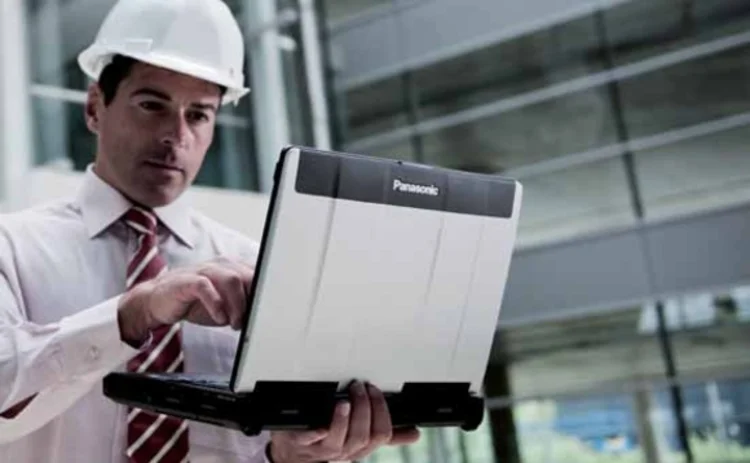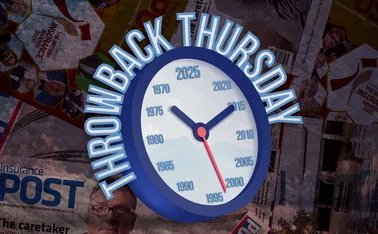
Health and Safety: Inspectors go hi-tech for a better service

Technology is transforming plant and equipment inspections and creating substantial improvements in the quality, speed and effectiveness of the inspections carried out and the inspectors that undertake them.
There are several areas where the impact of improving technology is most keenly felt: inspector competence; inspection reliability; speed of response; flexibility; and the quality of information used and created by inspectors.
Inspector competence is obviously a key ingredient in determining the standard of the inspection carried out, and, in general terms, the most competent inspectors are those with the best blend of skill, knowledge, experience and ability.
In more specific terms, and with particular regard to plant and equipment inspections, competence revolves around being able to assess risk, recognise defects and report findings in an accurate and timely fashion.
Advancing technology has played a major role in all of these areas and today helps inspectors to acquire, process and convey information more effectively than ever.
Computers, specialist software and the advent of the internet have delivered when it comes to advancing inspector competence, and the use of equipment such as Panasonic Toughbooks combines all three of these developments.
These rugged computers are built to withstand outdoor and onsite use and have now become integral to the way many inspectors operate. They make it easier for them to work to a higher standard and at a faster pace than in the past.
Such technology offers inspectors access to virtual libraries of the most up-to-date information on technical and health and safety issues.
Real-time reporting
It also means that reports can be created in real time and provides the ability to attach pictures and drawings to reports, and fully detail specific aspects of inspections where necessary.
It is not only in carrying out inspections that these Toughbooks make a difference, but in helping to keep inspectors at the top of their game. They offer access to online assessment tools, helping in the ongoing training and development of inspectors.
The information from these assessments can also be used to highlight where knowledge gaps exist, to tailor future training and to make sure it is being delivered in the most appropriate areas.
As this technology, and others like it, become further integrated with other systems they will play a central role in the continuing professional development of inspectors and the level of accreditation they carry.
It will also become easier for third parties to link into this data and verify an inspector's competency, or for details of their competency to be given to prospective clients.
This in turn will help them to keep accurate records and fulfil their own legal obligation of ensuring that inspections have been carried out by a competent person.
The second area where technology is making its mark is inspection reliability. A number of developments are enabling inspectors to get a level of insight into plant and equipment that was previously impossible.
While the most experienced could use their senses to aid them, it was often impossible to see inside machinery and get an exact handle on what was going on.
It is still important for inspectors to use their senses in assessing a situation, but modern techniques underpinned by new technology are really pushing the reliability of inspections forward.
Dramatic developments
Specifically there are three categories of testing techniques that have developed dramatically. Firstly, non-destructive testing has furthered inspectors' abilities to detect otherwise invisible defects as with the use of ultrasonic testing on welded joints.
Secondly, remote visual inspection allows images to be taken of areas that would ordinarily be inaccessible to an inspector. Cameras on crawlers, for example, help overcome some of the inherent problems of inspecting pipe work.
The third category is condition monitoring, which is used to predict the remnant life of a component. Technology, such as the Pulse system, allows inspectors to monitor the integrity of items such as the steel belt suspension ropes on lifts, and gives a much more accurate assessment than the human senses.
As industries become more heavily regulated, the requirement for robust and standardised evidence around the fitness of plant and equipment will only grow, so reliance on these sorts of technologies is set to increase.
The technologies and techniques used for these purposes also deliver benefits over and above the reliability of the information they provide. They allow for equipment to be inspected without taking it out of service and reduce the impact on productivity.
The consistent nature of the data collected also means it can be compared reliably against past and future results, which helps in monitoring the state of equipment and detailing a timetable of repair and replacement.
Better understanding around the life expectancy of individual components also means that maintenance programmes become a lot more efficient, as the changes are driven by the actual condition of components rather than by preordained time or activity intervals.
The third area where technology is making a major difference is in the quality of information contained in the report and the way it can be accessed and used.
Paper-based reports were unwieldy, difficult to distribute and awkward to disseminate into useful management information. Today's electronic reports and the accompanying software make them much easier to access and analyse.
This allows information to be extracted from reports and integrated into Microsoft Excel or HTML formats from where powerful management information can be generated. Where necessary, follow up actions can also be identified and highlighted.
Looking to the future, there are sizeable steps being taken in the development of radio frequency identification technology. This will enable individual items of plant and equipment to be tagged and given a unique ID.
Thereafter, all of the data pertaining to that ID can be called up almost instantly, to give engineer surveyors and customers an immediate status report.
The improvements that technology is delivering in inspection services are very exciting and they create benefits for all associated parties. They are improving efficiency and effectiveness while squeezing cost out of the process and reducing the downtime of plant and equipment as it undergoes inspection.
They are also improving the competence of inspectors themselves and increasing the quality and value of the reports they create.
Perhaps most exciting of all is that, as technology becomes ever more advanced, new developments that will further improve inspection services are being developed all the time.
Phil Moore
Head of engineering, Zurich
Work equipment risks in the UK
To help understand the complex array of rules around UK work equipment and the options available to help your customers operate compliantly, download your copy of Work Equipment Risks in the UK.
Only users who have a paid subscription or are part of a corporate subscription are able to print or copy content.
To access these options, along with all other subscription benefits, please contact info@postonline.co.uk or view our subscription options here: https://subscriptions.postonline.co.uk/subscribe
You are currently unable to print this content. Please contact info@postonline.co.uk to find out more.
You are currently unable to copy this content. Please contact info@postonline.co.uk to find out more.
Copyright Infopro Digital Limited. All rights reserved.
As outlined in our terms and conditions, https://www.infopro-digital.com/terms-and-conditions/subscriptions/ (point 2.4), printing is limited to a single copy.
If you would like to purchase additional rights please email info@postonline.co.uk
Copyright Infopro Digital Limited. All rights reserved.
You may share this content using our article tools. As outlined in our terms and conditions, https://www.infopro-digital.com/terms-and-conditions/subscriptions/ (clause 2.4), an Authorised User may only make one copy of the materials for their own personal use. You must also comply with the restrictions in clause 2.5.
If you would like to purchase additional rights please email info@postonline.co.uk







